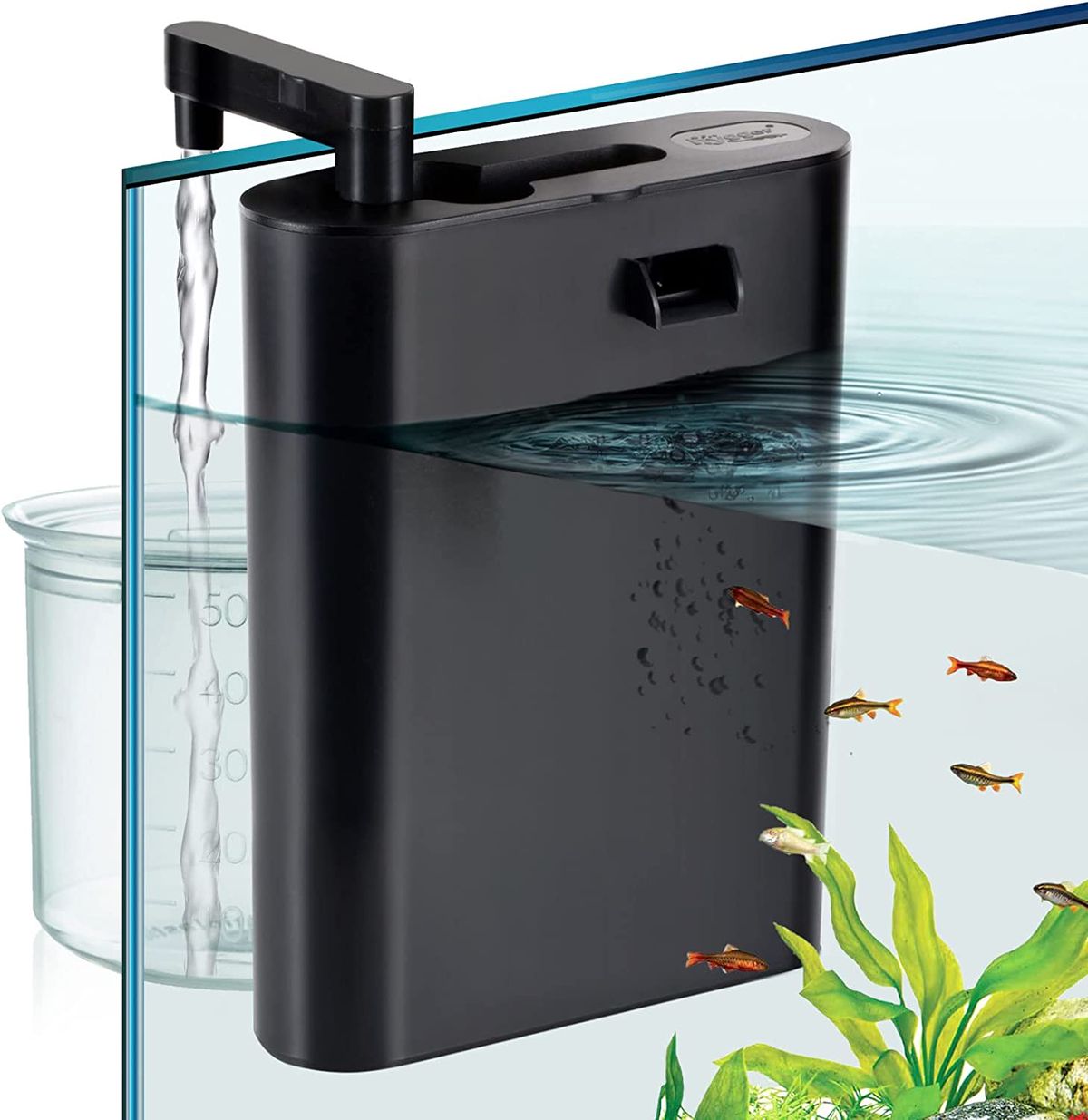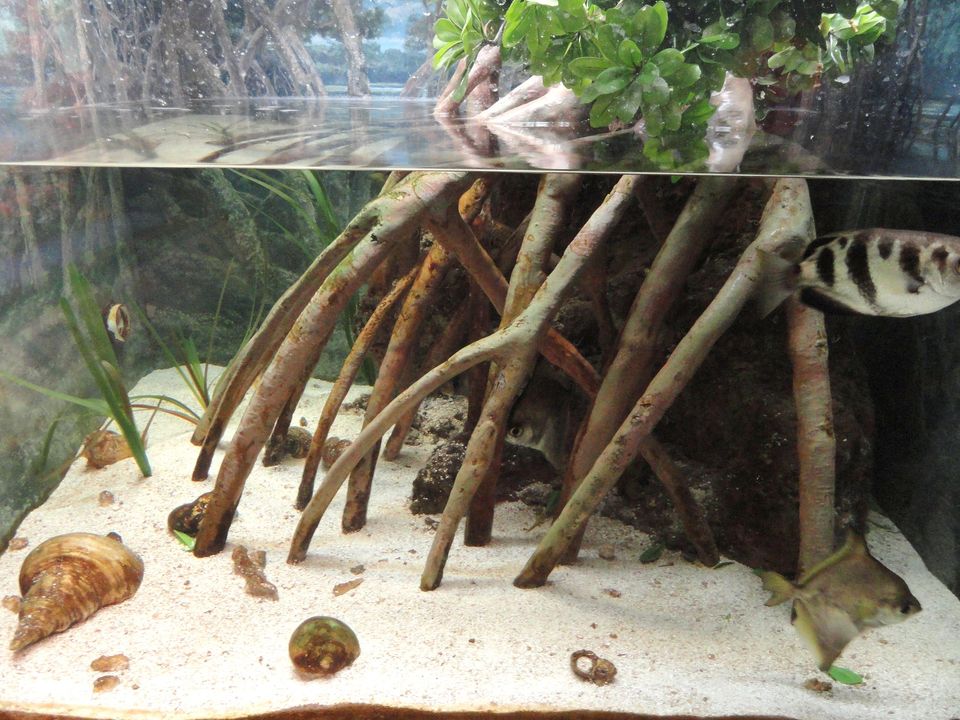Which Aquarium Filter is Best for Your Tank? Different types of Aquarium Filters and their Benefits
There are several different types of aquarium filters available, each with its own unique set of benefits and drawbacks. In this article, we'll explore the different types of aquarium filters and help you determine which one is the best fit for your tank.

Aquarium filters are an essential piece of equipment for any fish tank, as they help to keep the water clean and healthy for your fish. There are several different types of aquarium filters available, each with its own unique set of benefits and drawbacks. In this article, we'll explore the different types of aquarium filters and help you determine which one is the best fit for your tank.
The Different Types of Aquarium Filters: By process
There are four main types of aquarium filters: mechanical, chemical, biological, and wet/dry. Here's a brief overview of each type:
Mechanical filters
These filters work by physically removing dirt, debris, and other particles from the water. They use a media, such as sponge or filter pads, to trap the particles as water flows through the filter. Mechanical filters are effective at removing visible debris from the water, but they do not remove dissolved toxins or chemicals.
Chemical filters
These filters use chemical media, such as activated carbon or zeolite, to remove dissolved toxins and chemicals from the water. Chemical filters are effective at removing odors, discoloration, and other impurities, but they do not provide any biological filtration.
Biological filters
These filters use a media, such as ceramic noodles or bio balls, to provide a surface for beneficial bacteria to grow on. The beneficial bacteria break down waste products, such as ammonia and nitrite, into less harmful substances, such as nitrate. Biological filters are essential for maintaining a healthy nitrogen cycle in your tank.
Wet/dry filters
These filters combine mechanical, chemical, and biological filtration in one unit. They use a media, such as bio balls or ceramic noodles, to provide a surface for beneficial bacteria to grow on. The water flows over the media, allowing the bacteria to break down waste products and remove toxins and chemicals from the water. Wet/dry filters are often used in larger tanks or as a secondary filter in smaller tanks.
The Different Types of Aquarium Filters: By Type
Hang-on-back (HOB) filters
Hang-on-back filters are one of the most common types of filters and are easy to install and operate. They are typically used in smaller tanks and hang on the back of the tank, using a motor to pump water through the filter media.
Canister filters
Canister filters are larger, more powerful filters that are ideal for larger tanks. They are typically hidden inside the tank cabinet or underneath the tank and use a series of tubes to circulate water through the filter media.
Undergravel filters
Undergravel filters are a popular choice for smaller tanks and are relatively inexpensive. They consist of a plate that is placed under the substrate, with tubes that allow water to flow up through the gravel and into the filter.
Sponge filters
Sponge filters are a simple and affordable option for smaller tanks. They consist of a sponge that is attached to an air pump, which generates bubbles that help to oxygenate the water and circulate it through the filter media.
Diatom filters
Diatom filters are a specialized type of filter that uses diatoms, a type of microscopic algae, to filter out impurities in the water. They are effective at removing fine particles and are often used in saltwater tanks.
The Benefits of Different Types of Aquarium Filters
Each type of aquarium filter has its own set of benefits, depending on your specific needs. Here are some of the benefits of each type of filter:
Hang-on-back (HOB) filters
Hang-on-back filters are a good choice for smaller tanks and are easy to install and operate. They are also relatively affordable and provide good filtration for their size.
Canister filters
Canister filters are more powerful and provide excellent filtration for larger tanks. They are also versatile and can be used with a variety of filter media, such as activated carbon, ceramic noodles, and bio balls.
Undergravel filters
Undergravel filters are an economical and effective choice for smaller tanks. They are easy to install and maintain, and they provide good circulation and oxygenation for the tank.
Sponge filters
Sponge filters are a simple and affordable option for smaller tanks. They are easy to maintain and provide good filtration, as well as helping to oxygenate the water.
Diatom filters
Diatom filters are an effective choice for removing fine particles and impurities in the water. They are often used in saltwater tanks and can help to improve the clarity and quality of the water.
Which Type of Aquarium Filter is Best for Your Tank
When it comes to choosing the best aquarium filter for your tank, it's important to consider the size of your tank, the type and number of fish you have, and your budget. Here are some general guidelines:
For small tanks (less than 20 gallons)
A hang-on-back (HOB) filter or a canister filter is a good choice. HOB filters are easy to install and relatively inexpensive, but they can be noisy and not as effective at removing toxins and chemicals as other types of filters. Canister filters are more expensive, but they are more powerful and can handle larger tanks.
For medium-sized tanks (20-50 gallons)
A canister filter or a wet/dry filter is a good choice. Canister filters provide comprehensive filtration and are relatively low maintenance, but they can be expensive and require regular maintenance. Wet/dry filters provide comprehensive filtration and are relatively low maintenance, but they can be noisy and require a separate sump tank.
For large tanks (50 gallons or more)
A wet/dry filter or a canister filter is a good choice. Wet/dry filters provide comprehensive filtration and are relatively low maintenance, but they can be noisy and require a separate sump tank. Canister filters provide comprehensive filtration and are relatively low maintenance, but they can be expensive and require regular maintenance.
Conclusion
Aquarium filters are an essential piece of equipment for any fish tank, as they help to keep the water clean and healthy for your fish. There are several different types of aquarium filters available, each with its own unique set of benefits and drawbacks. By considering the size of your tank, the type and number of fish you have, and your budget, you can choose the best aquarium filter for your specific needs.




